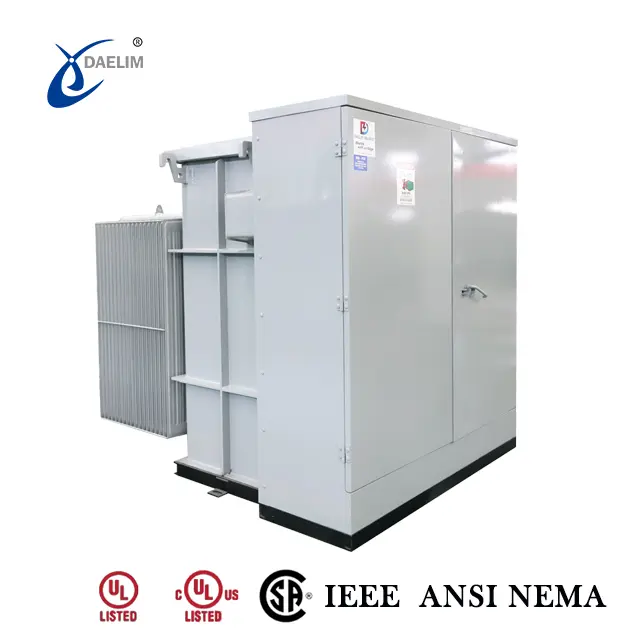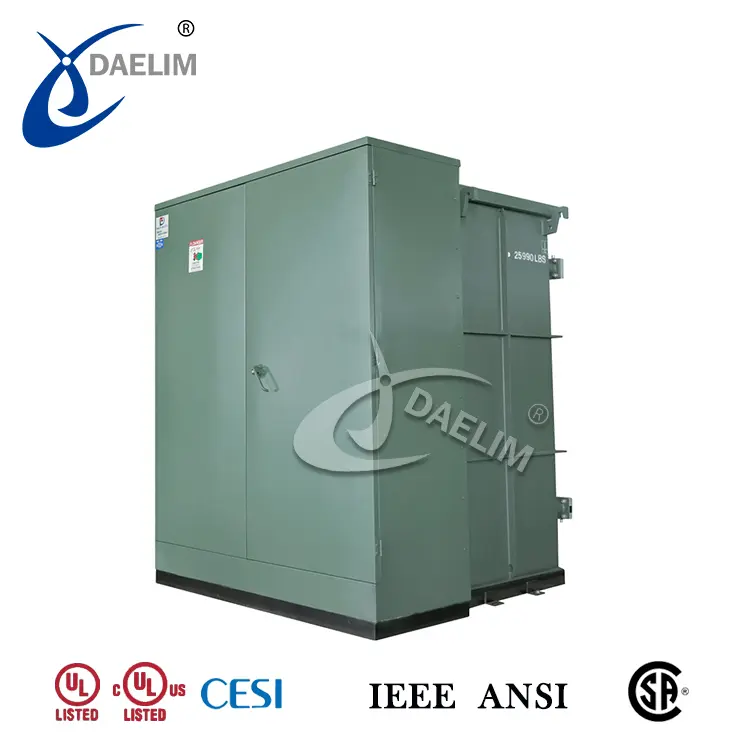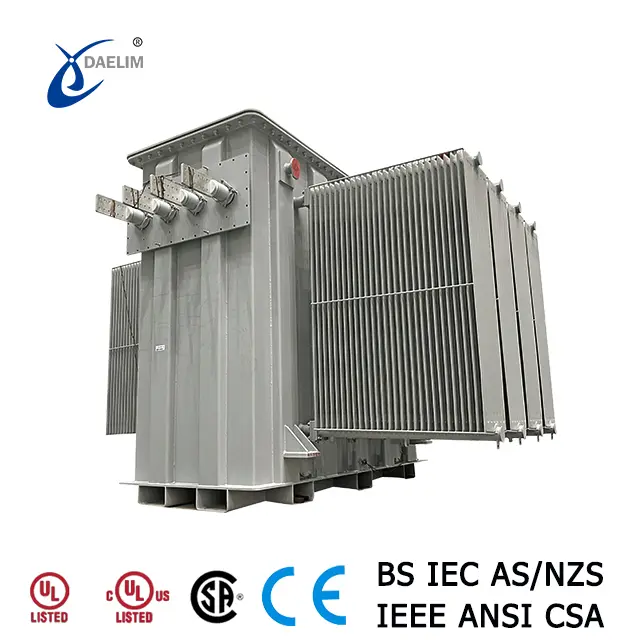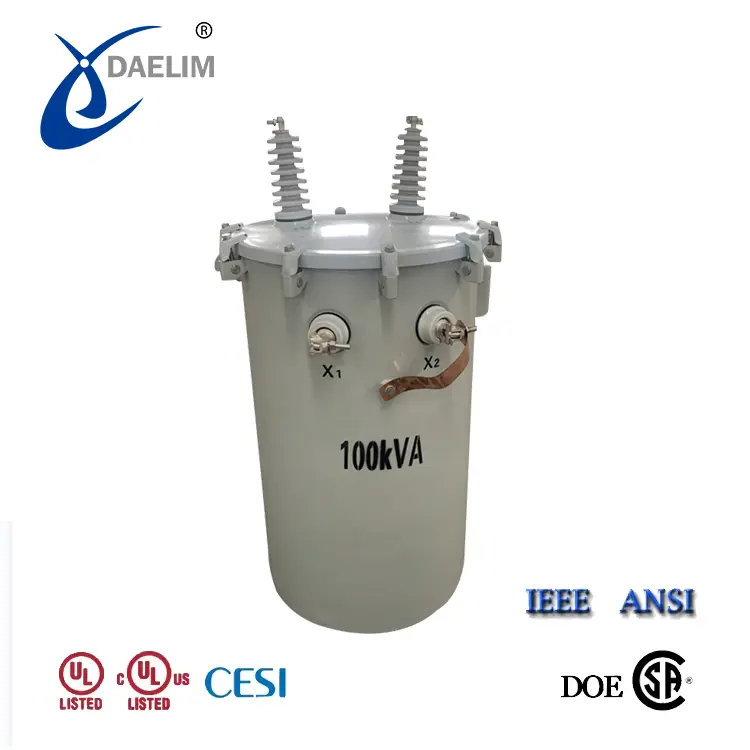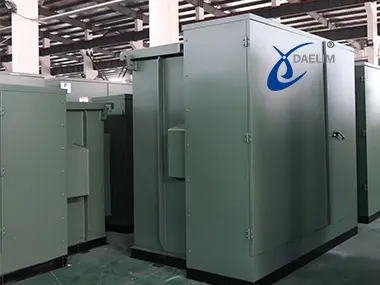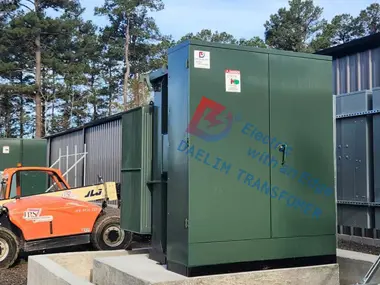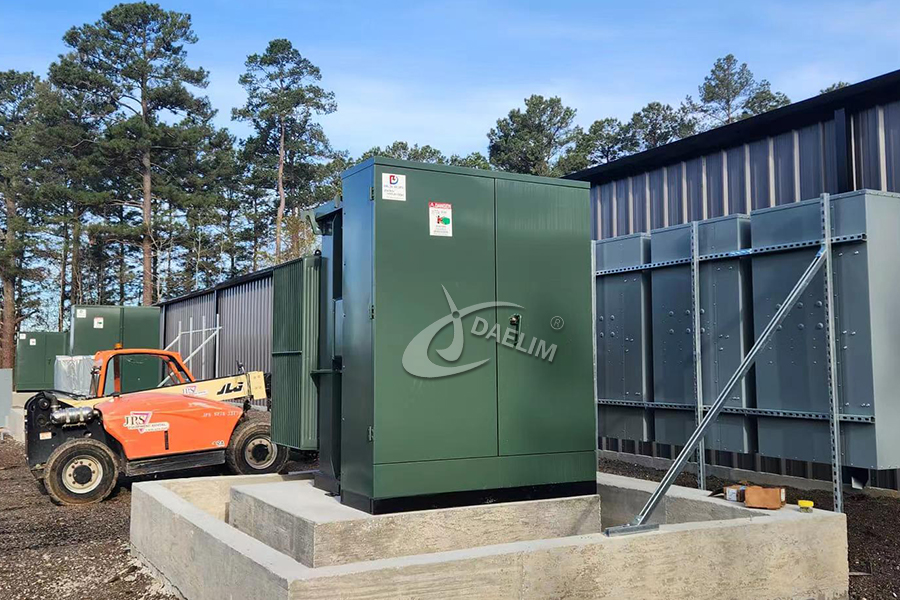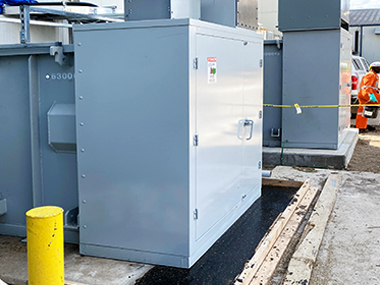What Happens When A Transformer Blows?
A transformer blow is sudden and loud, reminiscent of thunder splitting the sky. You'll hear a loud bang accompanied by flickering orange or blue light, especially noticeable at night. This light typically results from a short circuit within the electrical transformer. Depending on its power, the bright light can be visible from miles away.
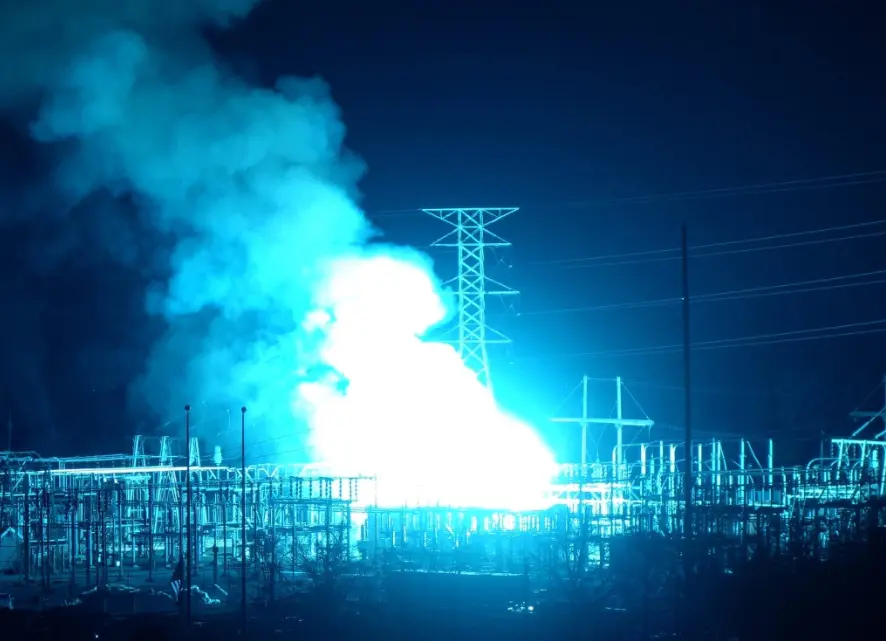
Blast with a very loud sound is usually the end of the event where you see the transformer blowing up. In most cases the sound is usually not of the actual transformer explosion. It is the sound of the transformer fuse that blows to prevent more catastrophic explosion of the transformer.
There are scenarios where your actual transformer blew. When this happens it will be a complete disaster for your neighborhood. There is a series of events that can happen if a transformer blew.
Why Transformer Blow?
Electrical transformers are very powerful electrical devices and they take megawatts of electrical power and either step up or step down the voltage in order to make it safe for the electrical load attached to the transformer. During this conversion, a lot of stress is applied on the parts of the transformer such as the winding, the connections, electrical core and there is also a lot of waste heat being produced during the process.
So if there is any sudden change in the process, then the stress on the electrical transformer parts will be of such a level that the parts will start to fail and there is a chance that heat buildup in the electrical transformer will be of such intensity that it will cause an explosion.
The sudden changes that can result in transformer explosion or transformer blowout are a sudden surge in the electrical voltage due to lightning strike, or a sudden surge in the voltage within the electrical transformer due to any short circuit in the internal circuits of the electrical transformer. It can also be due to the extremely high temperature of the surroundings and of the transformer’s internal body.
If a transformer blows, it can lead to several consequences:
1. Power Outages and Blackouts
The first thing that follows the bright flash and loud bang is a widespread power outage and blackout. In a residential area with a small-capacity transformer. This power outage and blackout can be limited to a few blocks. Businesses close their doors, traffic lights freeze, and the streets become confusing, dangerous places.
In industrial installations, this event is a big deal. A high-capacity transformer blows with much louder noise and bright flashes of light. The event halts the entire industrial installation. Nothing that needs electricity works, and the entire facility is idle until the transformer is replaced.
2. Potential Fire and Electrical Hazard
If the fuse of the transformer blows, then there is hardly any chance that there will be any fire or electrical hazard in the affected area. If it is the actual electrical transformer that exploded then there will certainly be fire and electrical hazards in the affected area.
The fire hazard is usually from burning wires. Electric transformer wires start to burn when they face more electrical charges much higher than their capacity. The heat product due to electric current makes them catch fire.
The heat buildup inside the transformer due to poor oil conditions can also produce short circuits in the core region/winding of the transformer. This is where the transformer explodes with a huge ball of fire.
An electrical hazard is from the electrical wires that feed the power transformer. If these fires break and wall on the ground then this can create serious electrical hazards. There is absolutely nothing you can do on your own to remove these hazards. All you can do is call the emergency department so professionals can do the work.
3. Potential Damage to Electrical Devices
A blown transformer can send a sudden power fluctuation or power surge to the connected industrial and residential installations. If your industrial and residential installation does not have any protection mechanism to protect electrical equipment like electrical breakers.
Then this surge can easily damage the electric device that was connected and operational when the transformer blowing up. Devices with batteries especially lithium-ion batteries can explode due to this surge thus creating a separate emergency situation and fire hazard.
4. Potential Damage of Property
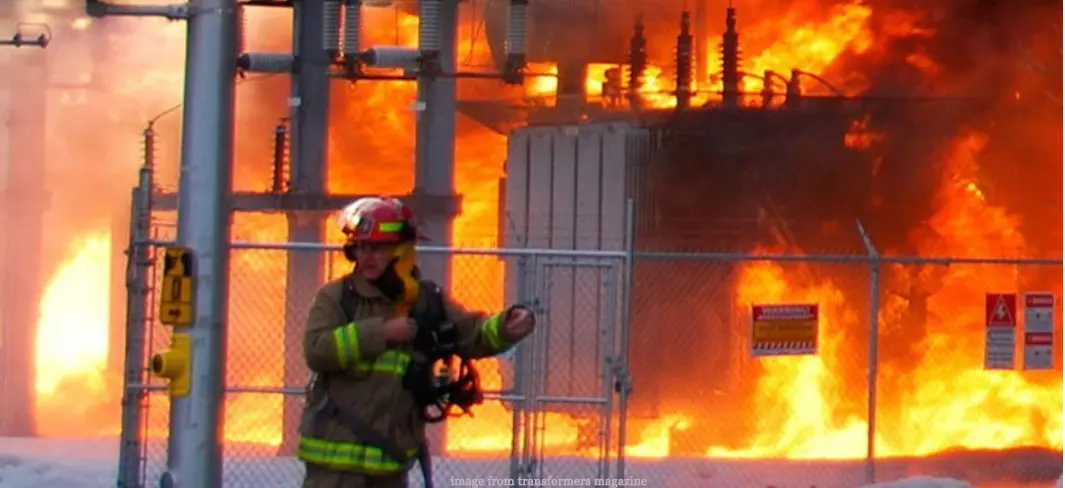
In the worst-case scenario, a higher-capacity transformer can explode in your neighborhood. The explosion will be big enough to send a shockwave that can break the glass windows of nearby houses. This explosion can also send a lot of small metal pieces flying into the surrounding causing serious damage to your property.
Other than this, the transformer has oil that works as a coolant to transfer heat from the transformer winding to the outer body. Before an explosion, heat in the transformer winding is of such high intensity that this oil can start a fire or burn any surface on which it falls during the explosion.
5. Effects on Local Services
If your area transformer blew along with its base. Then this might be a few days of work before your utility company fully restores the connection. This greatly affects your local infrastructure and businesses as there will be no electricity for your home or any of the public places.
Public places like hospitals might have alternative power sources like gasoline generators but in residential areas internet, phones, communication, and other items running on electricity will be out of work for a while. You can get the work going using battery power utilities or rely on your renewable systems like solar systems whose transformer will be working fine.
All Potential Factors That Can Make A Transformer To Blow
 There are several factors including both human error and environmental factors that can potentially cause a transformer blow. There can be one or a combination of any of the following factors that can cause the transformer to blow.
There are several factors including both human error and environmental factors that can potentially cause a transformer blow. There can be one or a combination of any of the following factors that can cause the transformer to blow.
1. Capacity failure
Each transformer you see has a specific voltage regulating capacity and it is installed to handle that specific range of voltage only. If your industrial or residential installation puts greater load on the transformer than its capacity. Then greater the load you put, greater are the changes that your transformer core winding may fail due to heat.
2. Maintenance Issue
Similar to every electrical device, transformers also need regular maintenance or at least inspection. Your utility company must do regular inspections to look for signs of wear and tear on the transformer body, electrical connections, and wiring. Any sign damaged on the body, loose connection or worn out wire should be taken seriously and maintained on priority basis.
3. Sudden Power Fluctuation
If your transformer is subjected to a sudden power surge from either a grid station or from any industrial installation. Then there is a fair chance that this sudden power fluctuation can give you a blown transformer. This does not mean the explosion of transformer into pieces, but surely it can blow off some of its fuses and cut off the power supply.
4. Short Circuit in Transformer Wire
There are two types of short circuits that can happen with your transformer. One is the short circuit in the winding of the transformer and the second is in either input wires or output wires. Both types of short circuit are dangerous, producing a lot of sparking and flashing but short circuits in winding can cause transformer explosion while the other one only causes fuse to blow.
5. End of Transformer Life
All transformers have a specific useful life. Their wire, oil, fuse, and windings have a specific life. If your transformer is being used way beyond its useful life. Then there are high chances of accidents with even the smallest of external factors. It is your utility company's duty to do regular transformer inspections and replace the transformer at the end of its life.
6. Environmental Factor
High temperatures in summer, lightning strikes in thunderstorms, and flooding are among the main environmental factors that can cause your transformer to blow. Accidents caused by my animals can also be considered part of this factor. The transformer blowouts by animals are the highest among all the factors mentioned above.
What Happen After Transformer Blows
Safety Protocols in Place
Transformer explosions are quite dangerous. Depending on the size of the transformer, you can expect anything. From just a loud explosion to a blast that damages surrounding infrastructure to fire that can burn everything it touches.
The low quality industrial or residential connections lack safety mechanisms against power fluctuation. Sudden power fluctuation due to transformer failure can start serious electrical fires in factories and residential buildings.
To counter this, related industrial or residential emergency safety protocols need to be initiated. Emergency workers move quickly. You will observe them cordoning off the area. Even with the transformer blown, the incoming wire to the transformer can have a very high live current. This can be life threatening for you if you wander too close.
Even the smallest transformers are so powerful that they can easily start a fire in the area they are installed. Transformers have a lubricant to keep them cool, but when the transformer explodes with this boiling fluid inside it. It can start a dangerous fire in the entire surrounding area.
To counter this, the fire emergency department needs to move its vehicle to the affected area. Simple water is not recommended to put out transformer fires as they might still have live currents coming into them. So the fire department has to use specialized fluid to put out the fire and cool down the transformer.
Similarly, depending on the situation, an ambulance and medical assistant might be needed for some people.
How Utility Companies Fix the Problem
After your transformer blows, it makes its surrounding region idle. Your utility company needs to fix this problem asap. Their procedure starts with the observation and inspection of the blown transformer and its electrical connection.
The fault that caused your transformer explosion needs to be removed before a new transformer can be installed. They check the wires, poles and equipment to diagnose what went wrong. Sometimes, it's a small issue. A fuse might have failed, a connection that loosened. In those cases, repairs are quick and power is restored in a matter of hours.
If the problem is with the capacity, size, or type of the transformer, Then a proper study of your area needs, load requirement and capacity needs is done. After that, a new transformer of an appropriate size and capacity is installed.
If the problem is related to environmental factors like heat waves in your region in summer or external factors like a dead cat or bird. Then the utility company needs to take appropriate steps to protect the transformer in the future. In this case, a cage or shelter can help to protect the transformer from further failure.
When the transformer itself is the problem, the task is larger. Workers may need to hoist a new transformer into place, a process that can take hours or even days. A strong blast can also destroy the pole or base on which the transformer was installed. So even more time might be needed.
To compensate you during this time, the utility company can set up an alternate mobile transformer of the required capacity. It will supply power until the blown transformer is removed, a problem that causes the explosion is diagnosed, the power lines have been checked and once the new transformer is ready, the switch is flipped and light slowly returns to homes and businesses.
Sensory Signs of a Blown Transformer
During the repair and replacement process, it is important to understand the nature of the transformer failure and in this regard, understanding the sensory signs of a blown transformer will play an important role. The sensory signs of blown transformers include the sight, sound and smell of the blown transformer.
Sight
You can determine the nature of transformer failure by observing what you see at the location of the blown transformer. The color of the burning flames, the smoke clouds, sparking, or arcing will explain the nature of transformer failure.
If you observe light green flames, blue flames, or orange flames burning at the site of the electrical transformer, then it is a clear indication that the copper of the electrical transformer winding and the insulation material used in the transformer winding is burning, leading to total transformer failure.
If you observe heavy smoke clouds at the location of the electrical transformer, then it is a clear sign that transformer failure has happened. If this smoke cloud appears white, then the smoke is from vaporized oil and the transformer has undergone excessive heating. If you are observing black, heavy smoke clouds at the location of the electrical transformer, then the transformer parts have caught fire and the winding and insulation section is burning.
If you are standing near an electrical transformer but at a safe distance and you observe phenomena like sparking or arcing at the transformer location, then it is a clear sign of a fault or a short circuit in the external wiring of the electrical transformer such as at the terminals or at the bushing of the transformer. This indicates that there is a problem in the electricity distribution system and external wiring of the transformer and the transformer has not yet completely blown.
Sound
The nature of the electrical transformer failure can also be predicted by the sounds observed during the transformer's failure.
If the observer is hearing a crackling sound, a hissing sound, or a buzzing sound coming from the electrical transformer body, then it is a clear indication of cracks in the electrical transformer’s external body and that pressurized oil or gases are leaking out of those cracks.
If the observer hears a loud boom or a bang sound coming from the electrical transformer location, then it is a clear sign of transformer failure and explosion of the main transformer body.
Smell
In case of large electrical transformers, the observer may notice a burning smell a few meters away and it will tell a lot about the nature of transformer explosion and failure.
If the observer smells burnt oil or an odor like ozone, then it is a clear indication that insulation within the electrical transformer and the transformer oil is either boiling or burning and there might be significant arcing inside transformer components.
If the observer smells a chemical tang, then it is a clear indication that the insulation material of the electrical transformer is decomposing under high thermal stress.
Preventative Measures: Can Future Failures Be Avoided?
The transformer explosion is usually sudden and all the unexpected to you but not for your utility company. Transformer explosions are not something that cannot be controlled and prevented. Although it's not possible to eliminate it, there are some concrete steps that will help reduce it.
The first step in this regard will be to use the latest tech to monitor and control several parameters of the transformer. Your utility must invest in transformers that have sensors and monitors to sense, monitor, measure, and display real-time data about current, voltage, transformer temperature, and oil conditions. If a transformer is overworked or overheating, warnings are triggered, and technicians can step in before a failure occurs.
The second step in this regard will be the quality of the product. Your industrial or residential installations always have an electric transformer that is designed and manufactured by a well-reputed company. A company that has a proven record in this field. Use of proper design, quality material, and standard manufacturing process will ensure your safety.
Preventative measures are constantly at play to ensure such failures are less frequent. Regular maintenance is key. Your utility company technicians should inspect transformers, power lines, and surrounding infrastructure for signs of wear and tear. They should look for rust, cracks, or loose connections, addressing these issues before they become full-scale failures.
Introduce protective measures
There are certain protective measures that you can take in order to limit the damage caused during a transformer explosion.
The first protective measure is to have a physical separator between the powerful electrical transformer and the other installations of any type. This physical separator can be a wall that limits the damage caused during the exploding transformer.
You can also have an automatic pressure releasing system called a fast depressurization system that will act automatically and release the internal pressure of the electrical transformer, which can prevent the rupture and explosion of the electrical transformer in case of any fault.
Another option is to use fire resistant fluid in place of regular oil in the cooling system, which can help limit the spread of fire during any fault.
Why Choose Daelim Transformer?
At Daelim Transformer, we understand the critical role transformers play in your infrastructure. As a trusted partner in the industry, we provide top-quality transformers designed to withstand the rigors of operation while minimizing the risk of failure. Our state-of-the-art facility in Houston, USA, houses a comprehensive inventory, ready for immediate shipment to meet your needs. Contact us now get transformer price
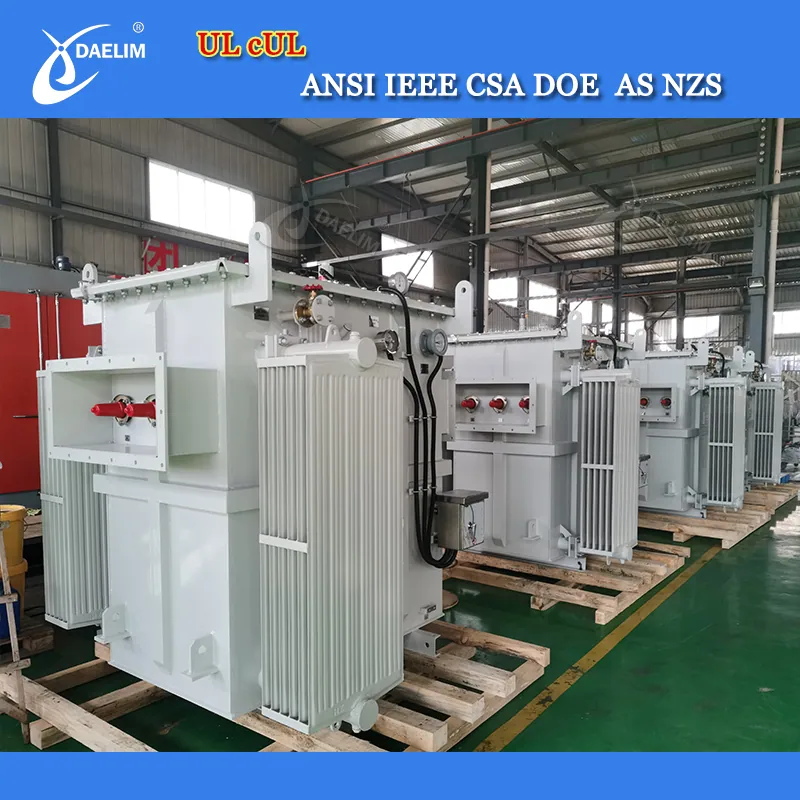
Daelim Transformer's three-phase substation transformers are designed for high voltages up to 44 kV and ratings of up to 20 MVA, compliant with global standards such as ANSI/IEEE C57, CSA C88, IEC 60076, and AS. These transformers are equipped with monitoring system accessories and feature components from internationally renowned brands like ABB, Copper, and Qualitrol.
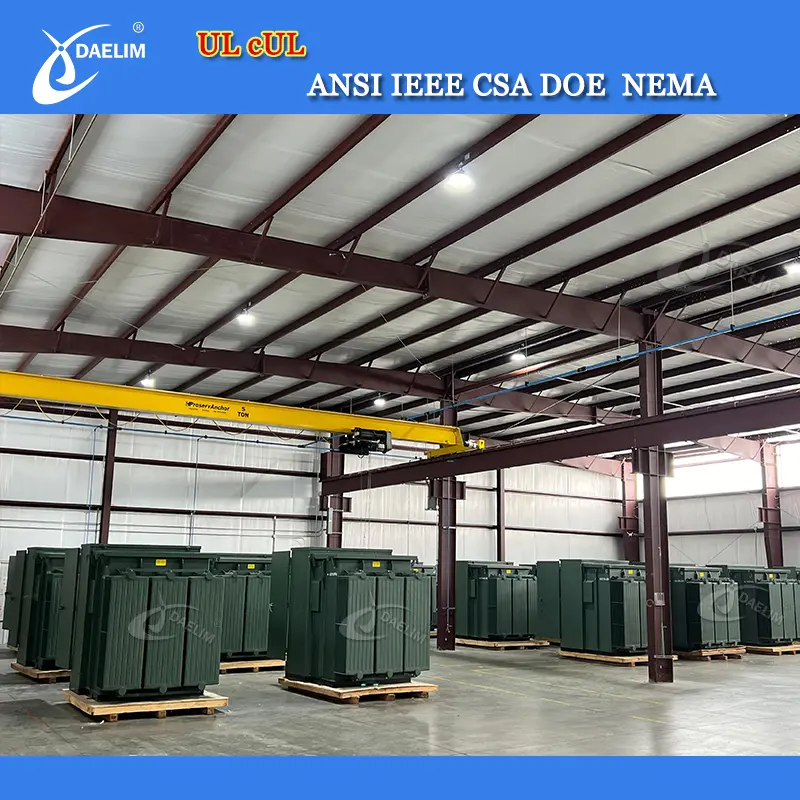
At our facility in Houston, we have hundreds of transformers in stock, including pad-mounted transformers ranging from 300 kVA to 3000 kVA, with voltage levels of 12.47, 13.2, 13.8, 24.94, and 34.5 kV. We also offer single-phase transformers with capacities from 50 to 175 kVA. There's no need to wait—immediate shipment is available!

Daelim Transformer's 1 phase pole mounted transformers with high voltages up to 34.5kV and ratings up to 333kVA, meeting global standards like ANSI/IEEE C57, CSA C2.1, IEC 60076, and more. Their products not only comply with DOE and CSA efficiency requirements but exceed them, ensuring reliability, efficiency, and energy conservation.
We prioritize safety and reliability, offering transformers that incorporate the latest technology for monitoring and performance. Our commitment to quality ensures that you receive transformers built to last, safeguarding your operations and enhancing your peace of mind.
Choose Daelim Transformer for your transformer needs—where excellence meets reliability.
Conclusion
Most transformers fail due to overload, wear, or environmental factors. Such failures lead to power outages and pose serious risks, including electrical fires and shockwaves from explosions. Prompt action from utility workers is vital to secure the area and restore power, minimizing harm to infrastructure and the public.
FAQ
1. How long will power be out after a transformer blows?
Depending on the nature of the damage and the type and size of the electrical transformer, the power can be out for about 6 to 48 hours if the transformer needs to be replaced. However, for minor faults like a blown fuse, the problem can be fixed in an hour as well.
2. Can a blown transformer be repaired?
Yes, blown transformers can be replaced. However, it highly depends on the nature of the damage done to the electrical transformer and the sensitivity of the application in which the transformer was being used.
3. Who pays for the damage?
It depends on the contract which the owner of the electrical transformer has with the transformer service providing company. In case of insurance, the insurance company will conduct a thorough examination on the root cause of the explosion of the transformer and may or may not pay damages.
4. When should a transformer be replaced instead of repaired?
In case the transformer is totally damaged such as insulation degradation, core deformation, or short circuit in the winding section the transformer should be replaced instead of repaired, because these are major components and the performance, quality and safety of the operation cannot be fully guaranteed with repaired parts.
Related Products
Related Article
Guide to Transformer Harmonics and K-Factor
In this article, we will tackle transformer harmonics, what it is, what are its effects, what are the possible solutions, and how k-factor can help you handle them.
DOE Efficiency Standards for Transformers
DOE efficiency standards for transformers mandate minimum energy efficiency levels, impacting manufacturers and consumers alike. Implemented to conserve energy, reduce costs, and support sustainability, these standards cover various transformer types and involve periodic updates. Compliance requires adjustments in design and materials, affecting transformer weight and installation practices. Effective from July 2024, these standards aim to enhance overall grid stability and energy conservation efforts.
Photovoltaic Storage Integration: Enhancing Energy Efficiency and Grid Stability
Photovoltaic storage integration combines solar power with energy storage for efficient grid stability. Applications include off-grid, grid-connected, hybrid systems, and microgrids, advancing renewable energy adoption and reliability.
13.8 kV 10.5 MVA Substation Transformer for Ecuador
A customer from Ecuador contacted Daelim Transformer for a 10.5MVA substation transformer (13.8kV high voltage, 2.4kV low voltage). Daelim Transformer provided a customized solution, conducted virtual factory tours, ensured rigorous quality control via video inspections, and offered post-delivery online training and ongoing support, fostering a successful partnership.
2600 kVA Pad Mounted Transformer For Blockchain In Kansas
This morning, I received the on-site photos of the pad-mounted transformers from the customer, and I was overwhelmed with excitement and joy. These pad-mounted transformers are installed at a 20MW blockchain site in Kansas, USA. A total of 5 sets of 2600 kVA pad-mounted transformers, all UL-listed, are being deployed at this site. Currently, 3 sets have already been installed onsite and are scheduled to be powered on imminently.
Pad Mounted Transformer For High Voltage Substation
FWS commissioned Daelim Transformer to design and manufacture a new high voltage substation for the Richardson International Canola Crush facility expansion in Yorkton, SK. The project required two specially designed top-in pad-mounted transformers, one 2 MVA and one 5 MVA. Unable to meet the delivery deadline, local North American suppliers led FWS to choose Daelim Transformer for their capacity and quality. The transformers were successfully produced and delivered within 16 weeks and are now operating safely.


